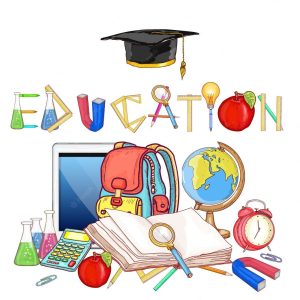
Education system in Nigeria. In order to educate the populace, an education system is a structured framework of institutions, individuals, and methods for teaching and learning within a nation. Typically, it progresses from early childhood (pre-school/kindergarten) through primary, secondary (junior/senior high), and tertiary (university/vocational) levels. However, structures vary greatly by country (such as Nigeria’s 9-3-4 model or Spain’s varied tracks) and faces challenges like funding, access, and curriculum relevance, all of which are governed by local needs and policies.
EDUCATION SYSTEM IN NIGERIA
English is the predominant language of teaching in Nigeria’s 9-3-4 educational system, which consists of 9 years of basic education (6 primary + 3 junior secondary), 3 years of senior secondary, and 4 years of tertiary education. Education is required for students aged 6 to 15. It replaced the previous 6-3-3-4 system and strives for universal access, but it has problems with quality, access (particularly in the North), and a large number of children who are not in school, which causes many of them to pursue education overseas.
What is Education?

Education in simple terms, refers to both the act of teaching knowledge to others and the act of receiving knowledge from someone else.
There are various levels of the educational system in Nigeria. these include;
Primary Education System;
For most Nigerians, primary education starts around age 5. After completing six years of primary school, students receive their first certificate of school leaving.
Subjects Offered in Primary Education:

education system in nigeria
Mathematics, English, Christian and Islamic religious knowledge, agricultural science, home economics, and one of the three major indigenous languages and cultures Hausa-Fulani, Yoruba, and Igbo are among the subjects taught at the primary school level. Private schools also offer
French, Fine Arts, and Computer Science. To be eligible for admission to private, state, and federal government secondary schools, primary school students must take the Common Entrance Examination.
Secondary Education System in Nigeria:

education system in nigeria
The second official level of education, secondary school, commonly referred to as high school, typically lasts from the ages of 11 to 13 to the ages of 15 to 18. However, It is the formal education provided before college and after primary school. Although classes 6–8 may also be included in middle school, secondary school normally consists of grades 9–12.
In Nigeria, education is vital and has a big impact on both individual growth and the country’s advancement.
Education in Nigeria has voluminous benefits and these include the below;
Importance of Education;

education system in nigeria
1. Investment in Human Capital: The foundation for building human capital is embedded in education.
2. Mitigating Poverty: One effective strategy for reducing poverty is the education system.
3. Economic revamp: An educated public is a beneficial force for economic growth.
4. It exposes individuals to life realities.
Summary
Nigerian education is governed by the Federal Ministry of Education. State-mandated rules regarding public education and state schools are implemented by local governments. The education system is divided into four categories: kindergarten, primary, secondary, and tertiary.

